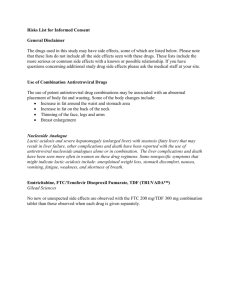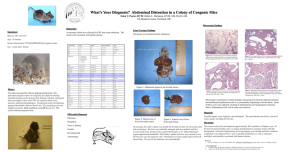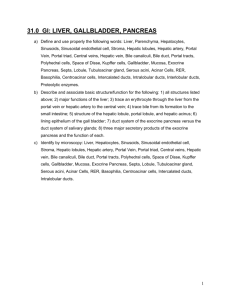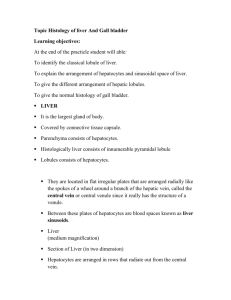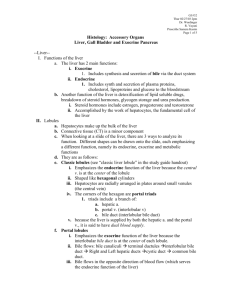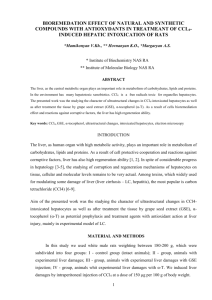Here
advertisement
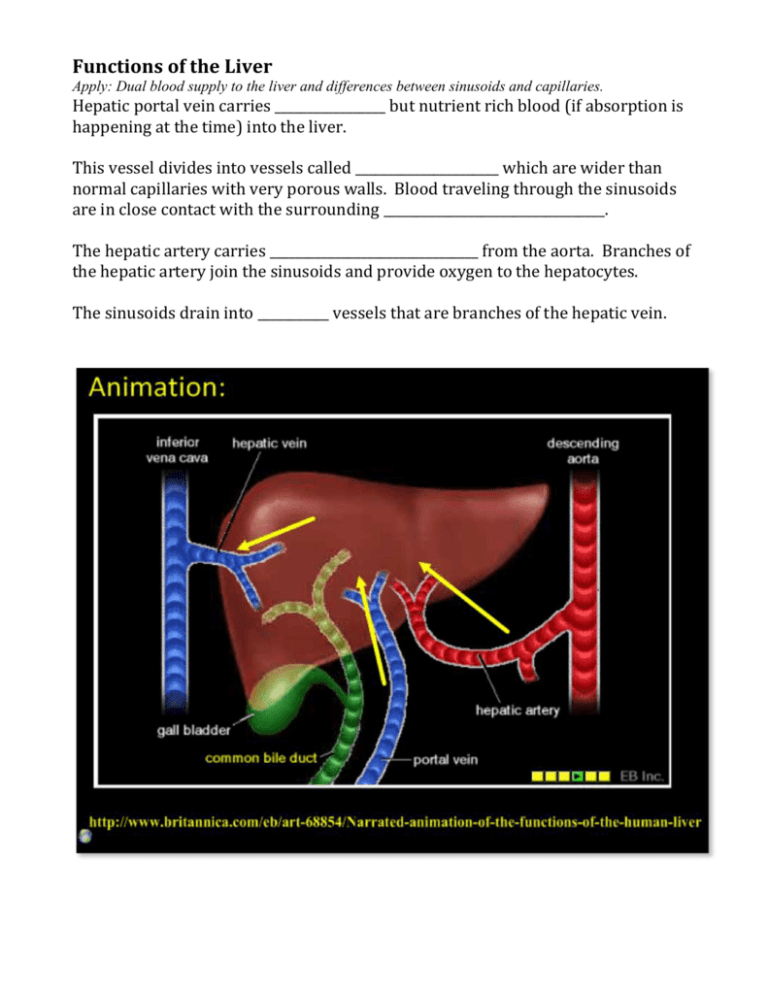
Functions of the Liver Apply: Dual blood supply to the liver and differences between sinusoids and capillaries. Hepatic portal vein carries _________________ but nutrient rich blood (if absorption is happening at the time) into the liver. This vessel divides into vessels called ______________________ which are wider than normal capillaries with very porous walls. Blood traveling through the sinusoids are in close contact with the surrounding __________________________________. The hepatic artery carries ________________________________ from the aorta. Branches of the hepatic artery join the sinusoids and provide oxygen to the hepatocytes. The sinusoids drain into ___________ vessels that are branches of the hepatic vein. The liver intercepts blood from the gut to regulate nutrient levels. When certain nutrients are in excess in the blood, hepatocytes __________________ and store them, releasing them when they are at too _____________ a level. CARBS For example when blood glucose is too _______, ____________ stimulates hepatocytes to absorb glucose and to convert it to ________________ for storage. When blood glucose is too low, glucagon stimulates hepatocytes to break down glycogen and release ____________ into the blood. AMINO ACIDS The liver cells also adjust the level of amino acids as the blood passes over the liver sinusoids. A pool of amino acids is maintained in the _________________, in the liver and in other tissues undergoing rapid protein synthesis. The body cannot store __________________ _______________. Excess amino acids are _________________________ by the liver. The organic acid part of each amino acid is removed and respired, or converted to fat or carbohydrate. By this deamination process, the liver ensures that soluble ______________________ is not formed and released in the tissues. __________ is removed from the blood in the kidneys. LIPIDS The fatty acids (and glycerol) that reach the liver are combined to form _____________________________. These are combined with proteins in the liver, and may be stored there. Alternatively they are transported in the blood plasma, mostly as low-density lipoproteins (LDLs), to the ____________________. Here lipids may be stored as food reserves (fat), or immediately broken down and respired as a source of energy. Some nutrients in excess can be stored in the liver. Iron, retinol (vitamin A) and calciferol (vitamin D) are also stored in the liver when there is a _____________, and released when there is a ____________ in the blood. Stores glycogen and releases as ____________________ when needed. Endoplasmic reticulum and golgi apparatus in hepatocytes produce plasma proteins. The rough _________ in the hepatocytes produce 90% of the proteins in the blood plasma, including all of the albumin and fibrinogen. Plasma proteins are processed by the ________________________________ in hepatocytes before being released into the blood. Surplus cholesterol is converted to bile salts. Hepatocytes convert cholesterol into bile salts which are part of the bile produced in the liver. What is the role of bile salts? ____________________________ _______________________________________________________________________________________ Hepatocytes can also synthesize cholesterol if amounts in the diet are insufficient. The liver removes toxins from the blood and detoxifies them. The liver ___________________________ harmful substances such as _________________, or renders drugs and toxins that have entered the blood stream as harmless forms for excretion. Drugs such as the _________________________ penicillin and erythromycin are handled in this way, as are sulphonamides. Hormones like thyroid hormone, and steroid hormones such as oestrogen, testosterone, and aldosterone are similarly ________________________, ready for ______________________ from the blood. The breakdown of erythrocytes (RBC’s) starts with phagocytosis of red blood cells by the liver. Components of red blood cells are recycled by the liver. Iron is carried to the bone marrow to produce hemoglobin in new red blood cells. Can you use the information in the graphic above and put it into your own words to describe how the liver deals with red blood cells? Research the following: Apply: Cholesterol as an indicator of the risk of coronary artery disease. Apply: Causes and consequences of jaundice.




